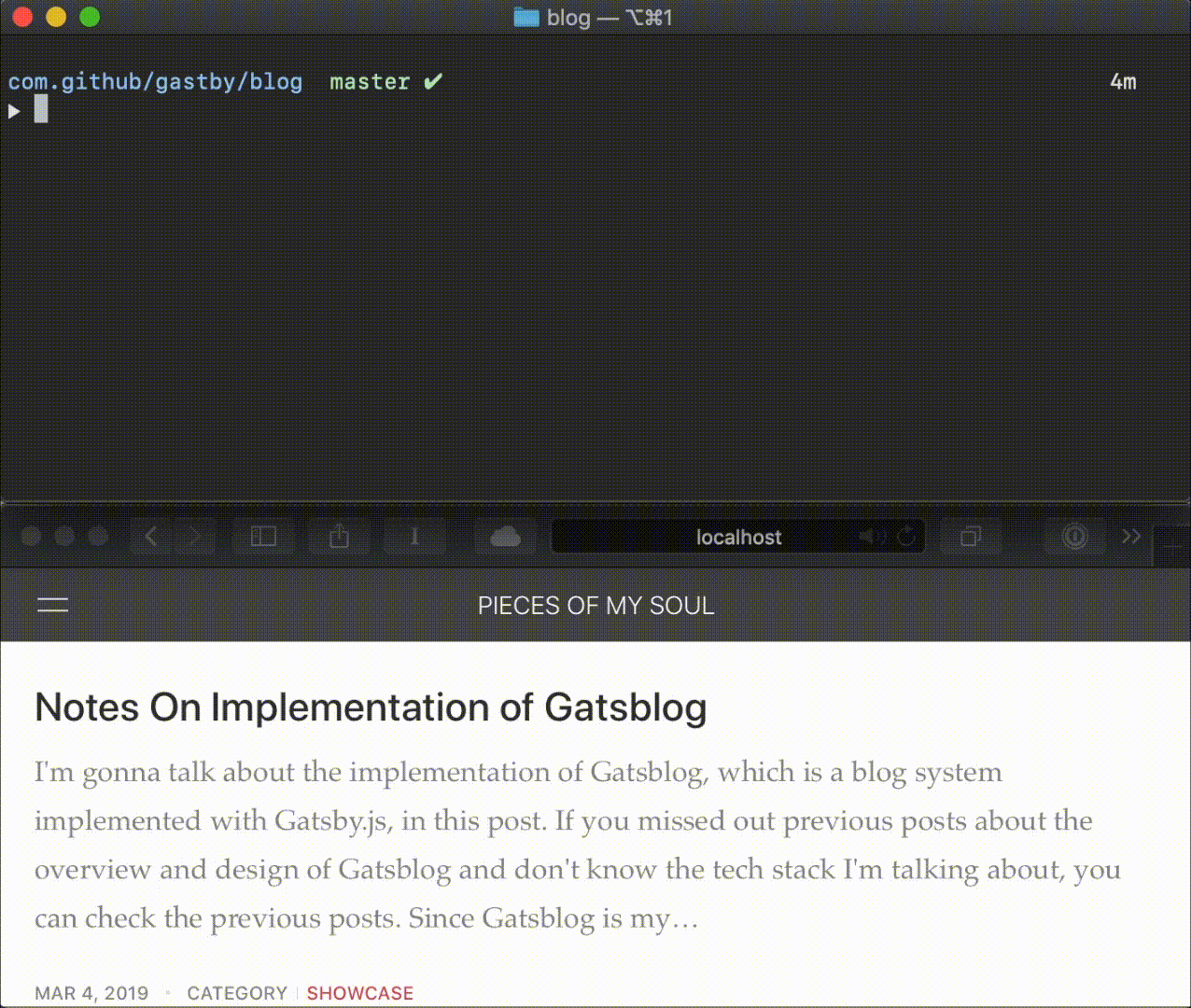An Introduction to Gatsblog
A Blog Built with Gatsby.js
As I mentioned in the Hello World post, there are no blog systems fulfill all my needs, time that I have such a deep touch with frontend tech stack.
Thus I got started to make my own one. And frankly, this is the first I just decided to write down the whole process, from design to implementation, to make a memento of my journey, which conducted by an iOS developer with industrial design background, into modern frontend tech stack.
Pseudo-Live Editing
Any site built with Gatsby.js comes with a very naïve live editing
feature. You can just launch Gatsby's develop mode server with
gatsby develop -H 0.0.0.0 or npm run start and open a browser with
address http://localhost:8000. Then you can watch your post changes each
time you saved the edited file to the disk.

Sophisticated Grid System
I adopted a sophisticated grid system and tweaked the sizes of elements and the spaces between elements. The design is not very modern, but functional -- at least the content is clear and spaces between elements are not annoying.
Responsive Image with Retina Display Support
Most of the figures on my posts are authored by myself. Thus it is very
easy to output @2x and @3x version at the same time I'm outputting the
original version. Thus Gatsby supports such a resolution density in file
names. It recognizes image files with names like xxx.png, xxx@2x.png
and xxx@3x.png as a series of image files whose resolution density is
1x, 2x and 3x. You only have to link your image with the image
markup in Markdown grammar:
markdown
Then Gatsblog handles responsiveness and Retina display support for you.
Since there are also images that we grabbed from web or taken by cameras
asking users to offer versions for all the resolution densities is
impossible. What happens to an image file without paired resolution
density versions? Don't worry. If you just put an image file named after
xxx.png in your Markdown document's folder, Gatsblog handles
responsiveness support for you.
KaTex
Because I'm a fan of math, Gatsby supports inline KaTex syntax like
$$a^2 + b^2 = c^2$$ which rendered as , and block
KaTex syntax:
katex
katex
katex
Enhanced with MDX
React Live
class Counter extends React.Component { constructor() { super(); this.state = { count: 0 }; } componentDidMount() { this.interval = setInterval(() => { this.setState(state => ({ count: state.count + 1 })); }, 1000); } componentWillUnmount() { clearInterval(this.interval); } render() { return ( <center> <h3>{this.state.count}</h3> </center> ); } }
0
Code Block with Path Label
By putting path=path_of_file after the language metadata in the
beginning line of the fenced code block
markdown
you can get a code block likes
src/main.cc
Statically Deployed
Empowered by Gatsby.js, Gatsblog can be statically deployed. You can deploy a site by several clicking on Netlify.